One of the biggest misconceptions about minimalism—especially before all those Marie Kondo headlines—is that you simply cannot be a minimalist with kids, or that, if you are, you’re somehow being cruel, or just unreasonable. At least from what I’ve seen, it’s almost a vibe of, like, “There is simply too much stuff. And there is nothing that I, as the parent who runs the house, can do to prevent total overwhelm and takeover by kids’ items”.
Now, I know there are some extreme outlying cases where a well-meaning (or perhaps not so well-meaning) grandparent, lost in the consumerism of modern American culture, goes positively bonkers about giving things to their grandchildren. But, as I said, those are more of outlier cases.
When you have acquired too much (whatever that looks like to you) kids’ stuff, it can feel really difficult deal with. However, even once you pare down, you may be worried that it’ll just accumulate again. I know growing up, my parents were usually the only ones who got me anything (outside of birthdays); but now, friends, and every kind of family relationship seem keen on trying to get the ‘most favoured’ thing for children at gift-giving times. And that just means more stuff.
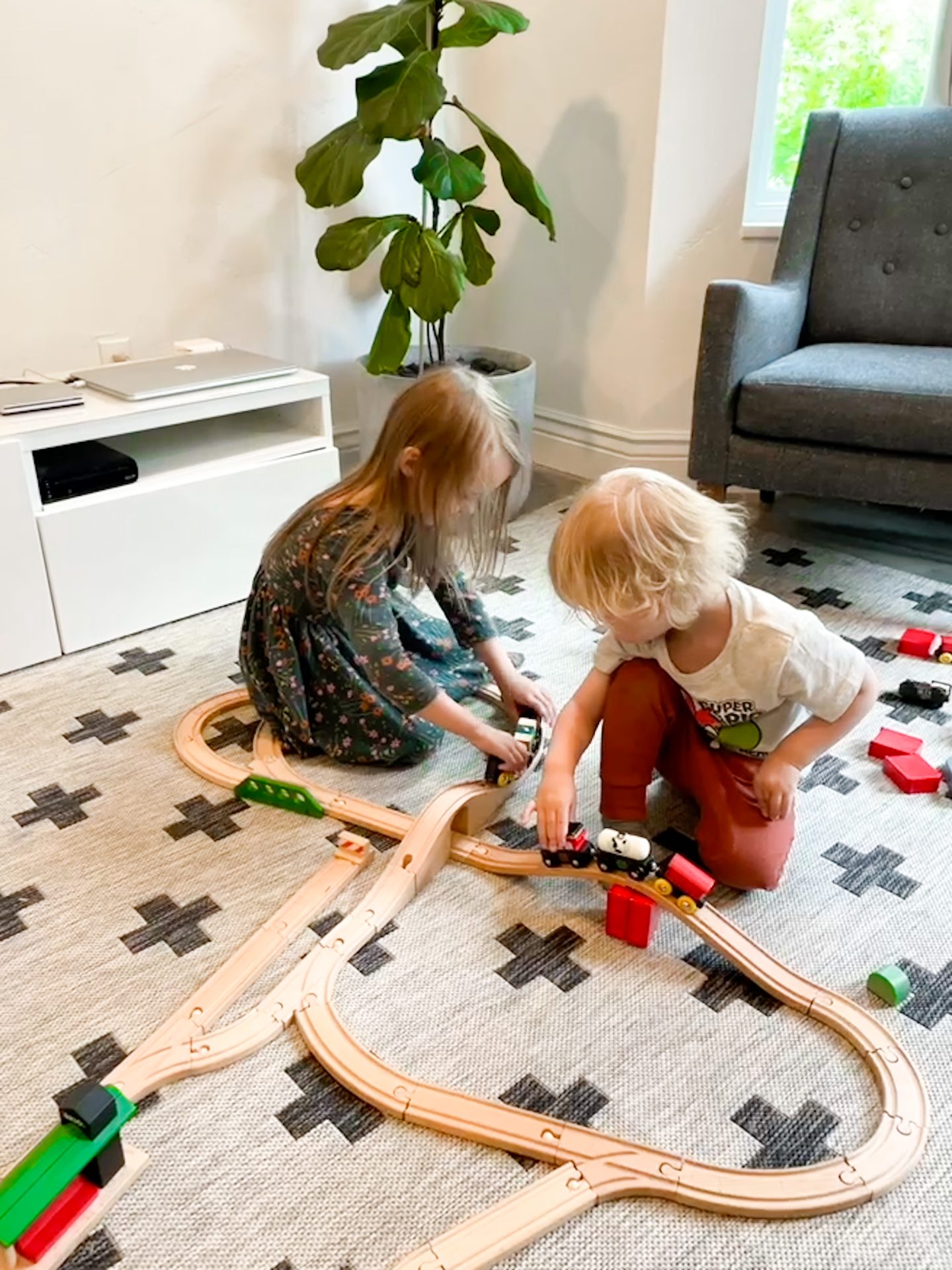
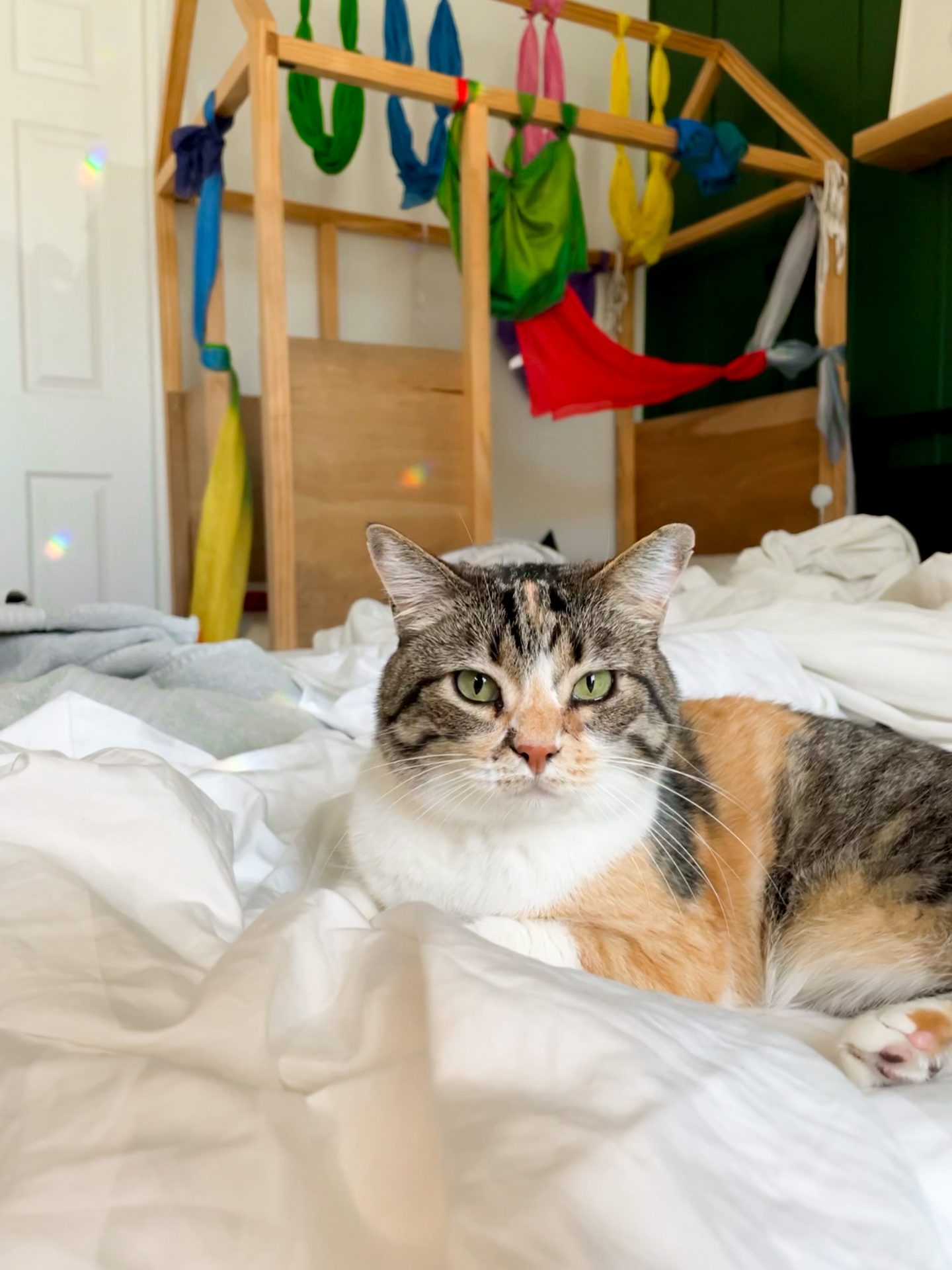
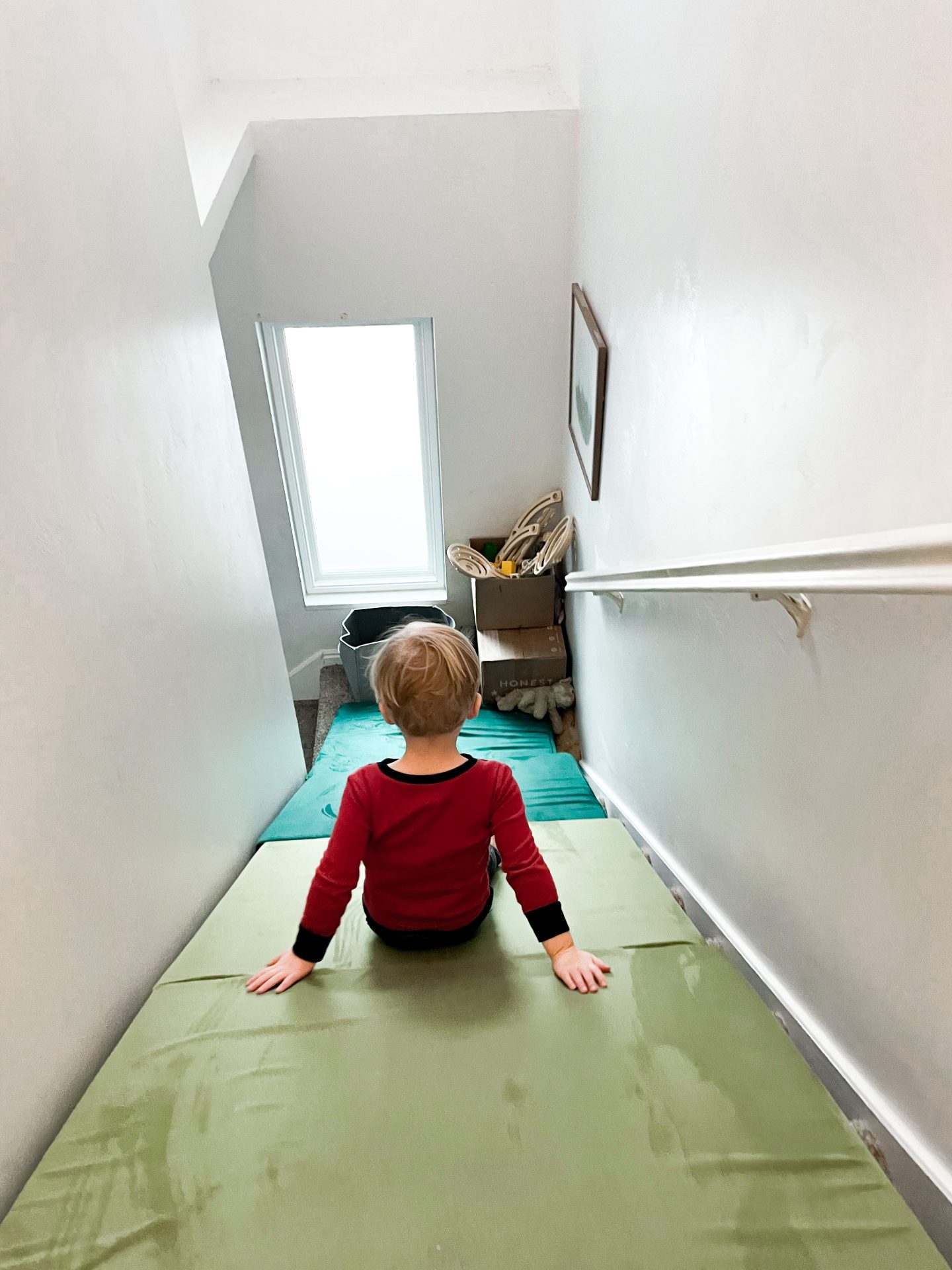
I think the k e y to to keeping clutter at bay is mindfulness—which does require a particular level of awareness + effort. Though I went over this for homes as a whole already, I think children’s’ things are a big enough category to need its own walkthrough. Whether you’re a new, or expecting parent, or you’ve recently cut-down are are looking to never go back to the excess of kids’ things you had before: this post is for you.
Kids items fit pretty neatly into a few categories:
- clothes
- toys
- supplies & equipment for specific activities, ‘’special interests’, if you will
My suggestion for every one of these categories is to self-impose limits based on space. Since you’re deciding what will work best for you and you family, there’s a lot of room for flexibility, but the important thing is that you do choose a physical limit of space. I’ll share how this looks in our house.
Clothes. This category will probably feel the easiest. Make sure that whatever the clothing storage situation is for you child, that it is contained to the space. I’m not saying that, if you have a tiny dresser, that they can’t also have hanging items, and bins for clothes. But the space for that should be set aside for just that, and be clear. Right now, my husband is building-in storage to our bare-bones kids’ closets. There is a dresser with 4 squares of storage on top, so they can use the dresser, but if they ever do need more space, they can utilized baskets, too, and it’s all stored together. They also have a hanging bar, and a space just for shoes. Before, our situation was a hanging bar, and my oldest had most of her clothes in an IKEA dresser in one drawer, with her shoes (and a few other clothing items) in another drawer—keeping everything together. If you need to switch out cold and warm weather clothes, try to keep it to 1-2 storage boxes, and have them be used for that purpose only, and be easily accessible (we store ours in their closets).
When your child inevitably needs more clothes, it’s helpful to take some time, and figure out a capsule wardrobe, so you don’t end up buying a bunch of excess.
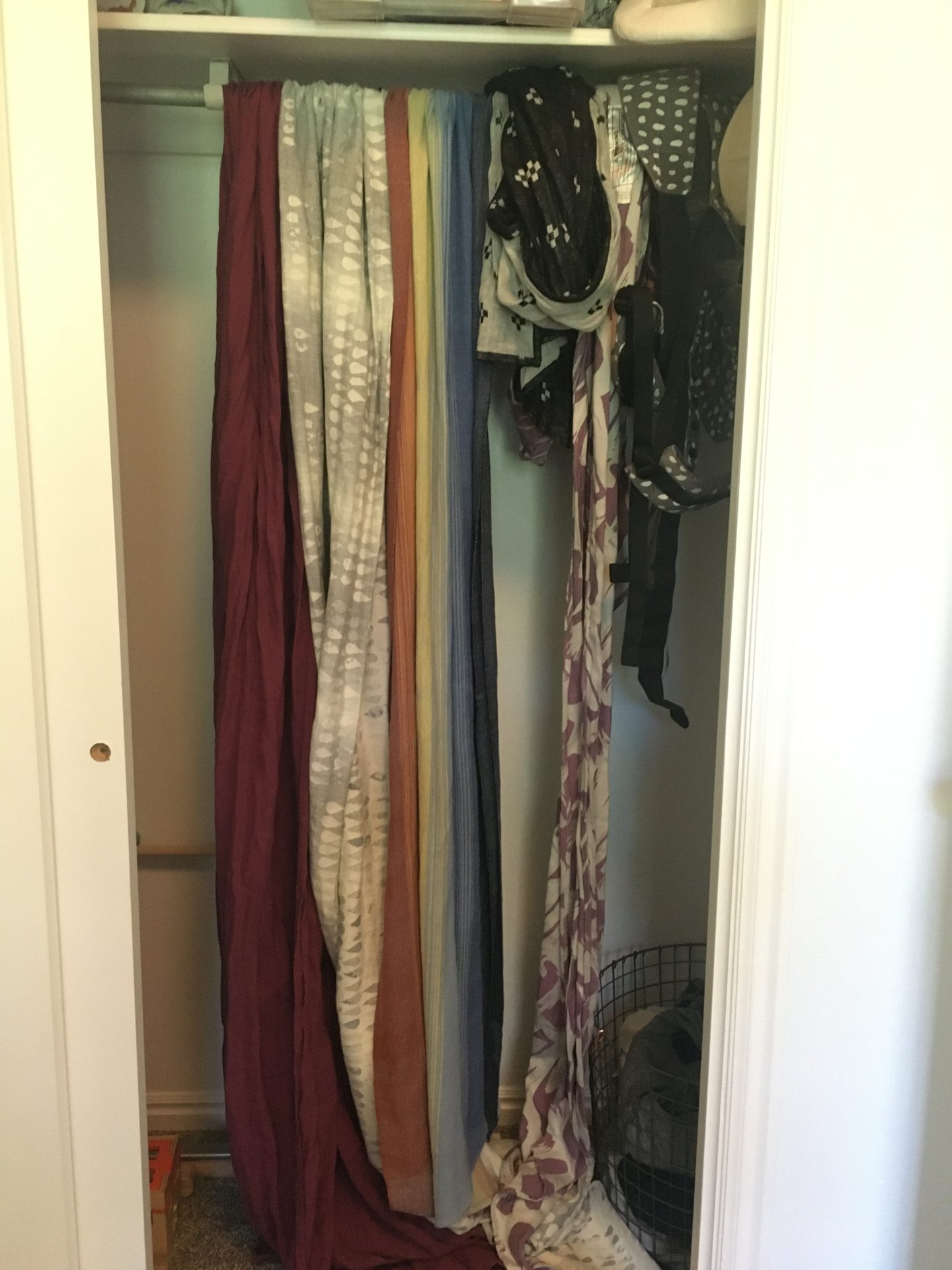
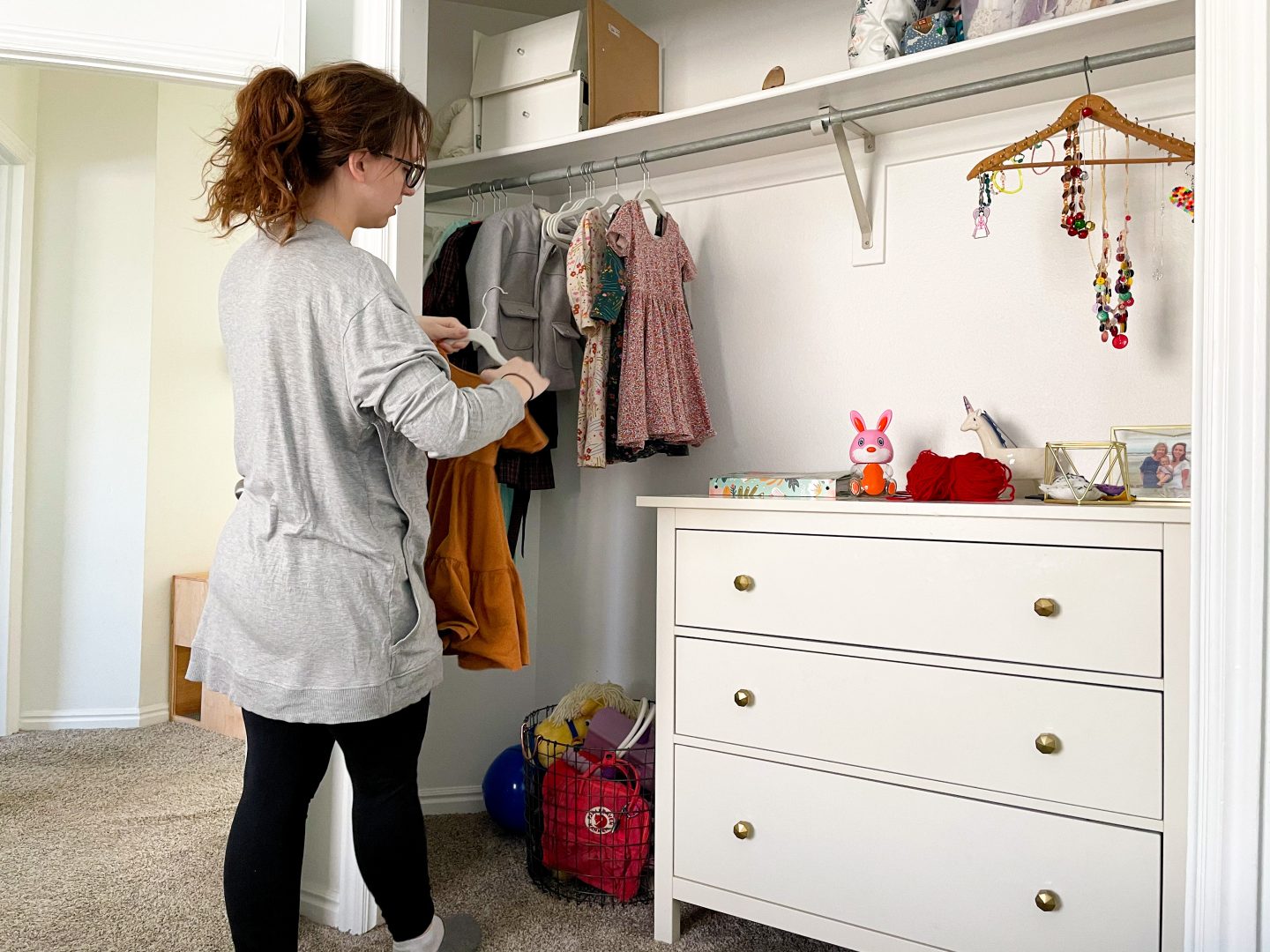
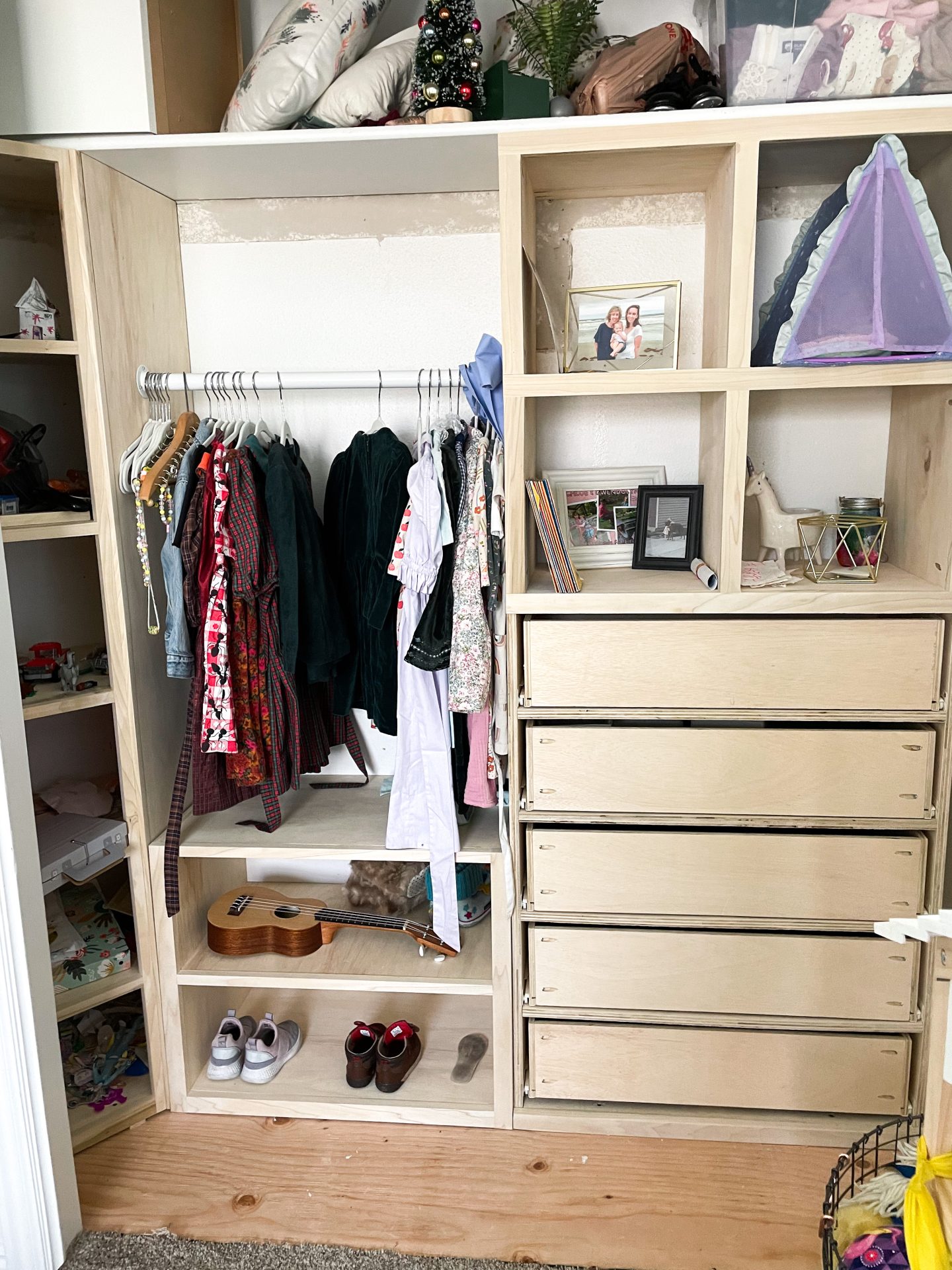
Toys. This is where things get a little harder. Maybe you bought a toy that you thought your kid would love, and, if you’re honest with yourself, they just don’t. Or they’ve outgrown a toy they used to love, or they just happened to get too many things recently. The biggest thing is to take stock off the storage solutions you have, or could get, and go from there. Can you just put toys on any spare shelf? Yes, but I’m pretty you’re not reading this blog post for that, and, if you are, I’m sorry to say this is not the blog post for you. I suggest you decide on a dedicated place for toys, and not allow them to be stored anywhere else. This may sound extreme, but limitations are vital for keeping kids’ clutter down, and it isn’t as ridged as it seems anyway. In our house, we have a Kallax shelf for each kid. That’s where their toys go. That being said, though I do not allow very much to break the rules, there are some exceptions. My daughter has a huge dollhouse in her room—that’s just out in the room. She also has a few American Girl doll accessories from her grandma that we ensure stay nice by putting on some of the new closet shelves. We also have 1 drawer for Barbies, so they can lay nicely. See: exceptions. On each child’s toy shelf, we also have a little storage box for them to keep a few random or smaller toys to keep them tidy. But when we find toys where they shouldn’t be, or crafts on the proper toy shelf, we talk about what’s allowed to be where, and fix it.
Since children grow and change, toys just keep joining the family. To mitigate the ‘too much’, we try to give out a list of things we’re pretty confident the kids would like—to family—and we’re a ‘don’t bring a gift’ family. For birthdays, our kids each get 1 gift from us; and Christmas is 3 gifts (+ stockings + Santa + stuff from everyone else).
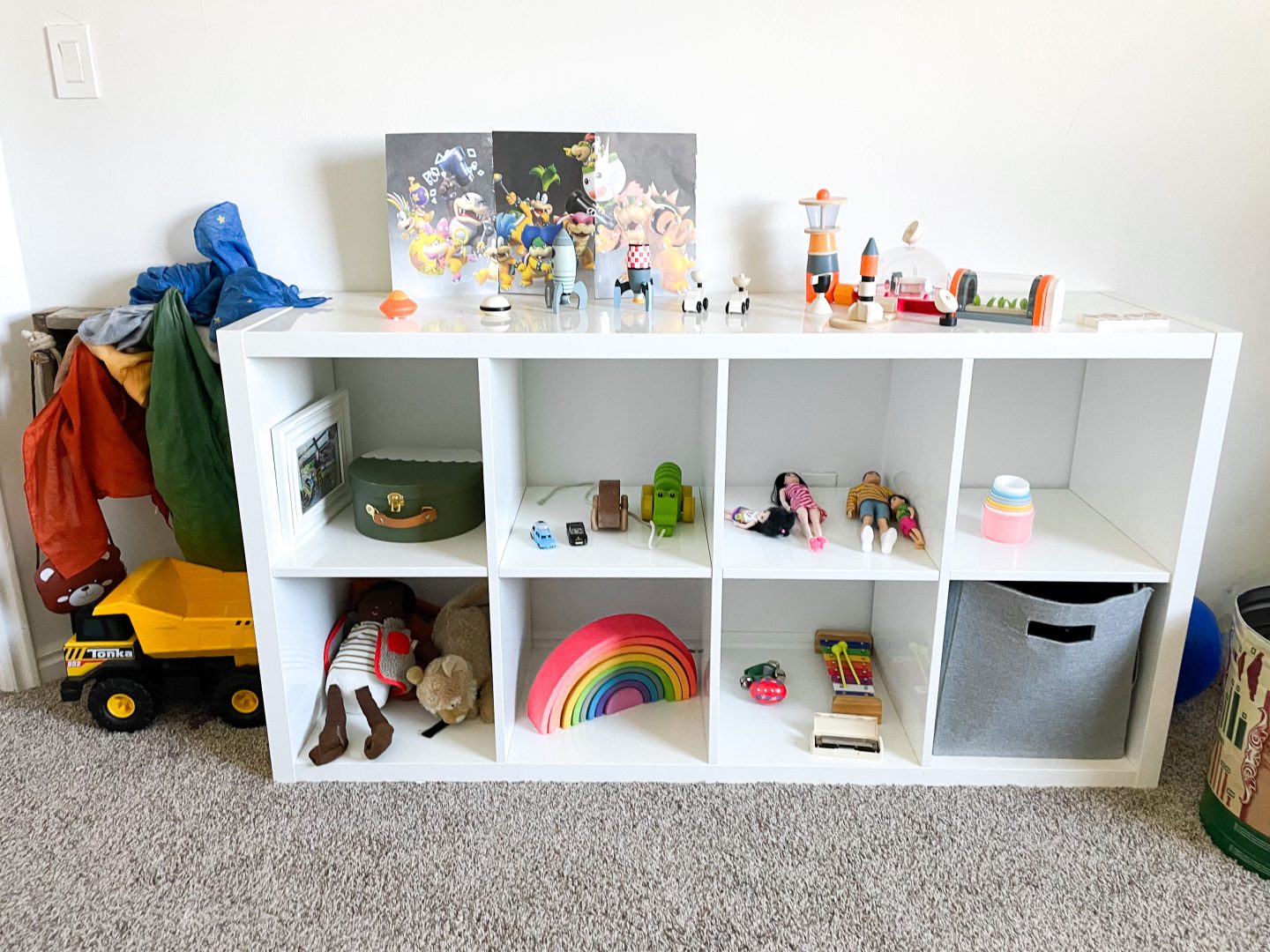
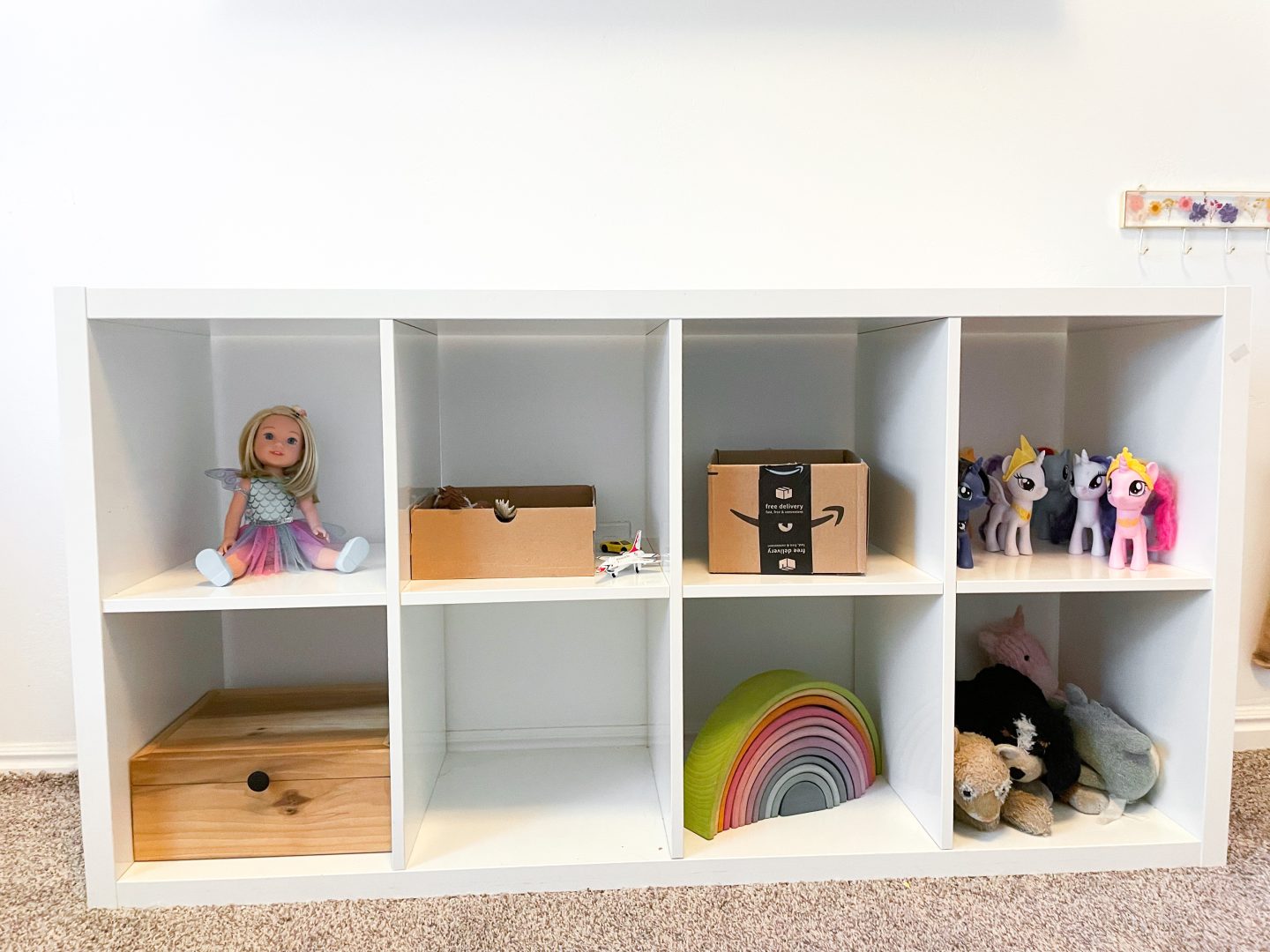
Special Interests. This can be the most difficult category, especially depending on what the said ‘special interests’ are. My daughter is a HUGE crafter. We have l o t s of art supplies, so we’ll use that for our example. For the longest time, I did try to confine her art things to a small shelf in our cleaning closet. However, that stopped working, because I couldn’t have craft supplies on every shelf, and that didn’t work well for her either. To set a designated physical space, I bought a metal ‘art cart’. There, she can keep all her supplies, plus we can roll it elsewhere, if need-be. Finished pieces go in a binder, or, if they’re 3D, on the corner shelves in her closet (though they used to go on top of her toy shelf).
Art supplies, for a couple of years, were the perfect way to get her ‘consumable’ gifts. However, last year, we and everyone else did so, and we ended up with too much for her to use, and, worse, too much for her to tidy—she was overwhelmed multiple times a day with the amount of stuff. It’s important to keep that awareness always, so you know what the situation with each category is.
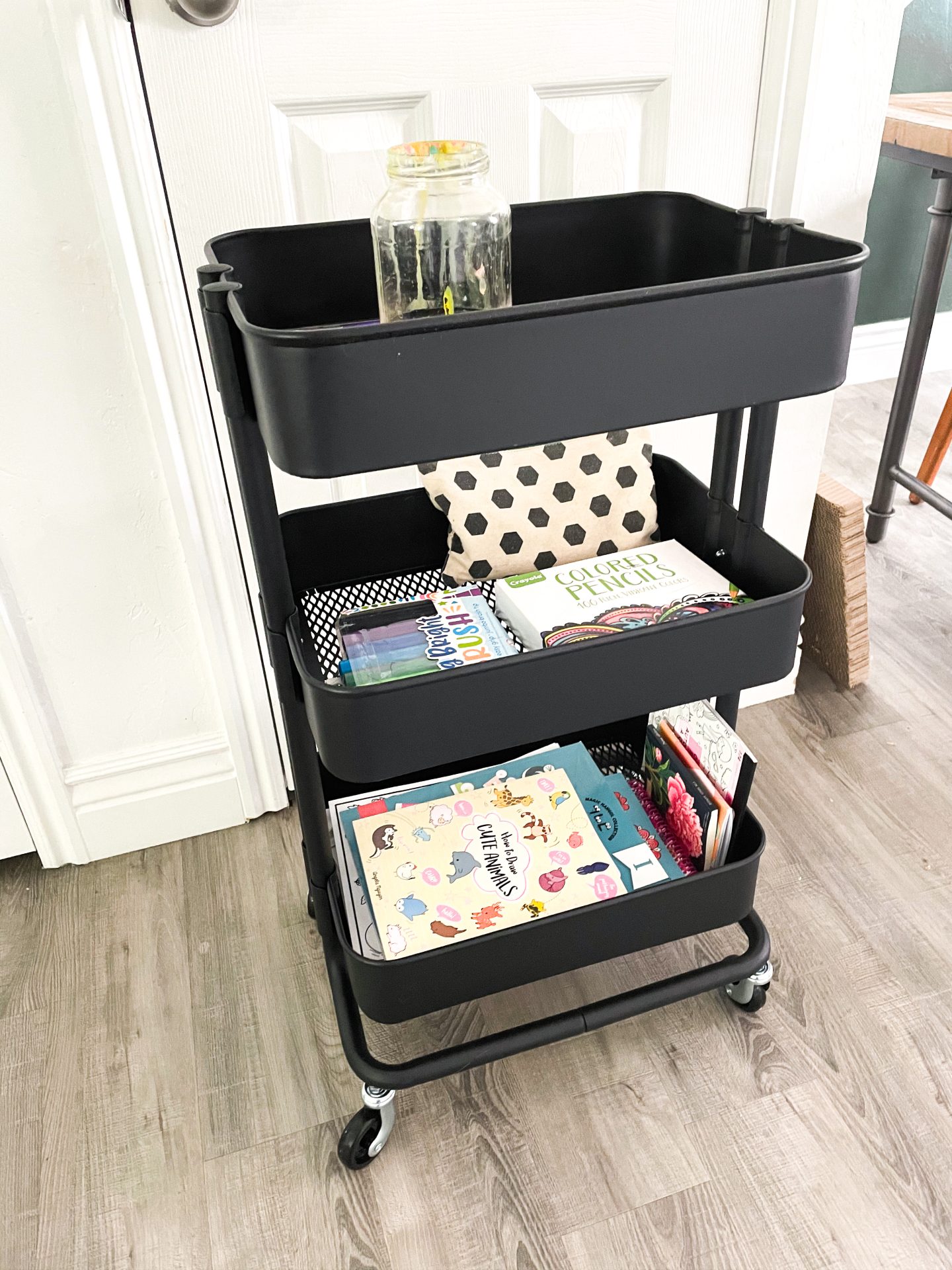


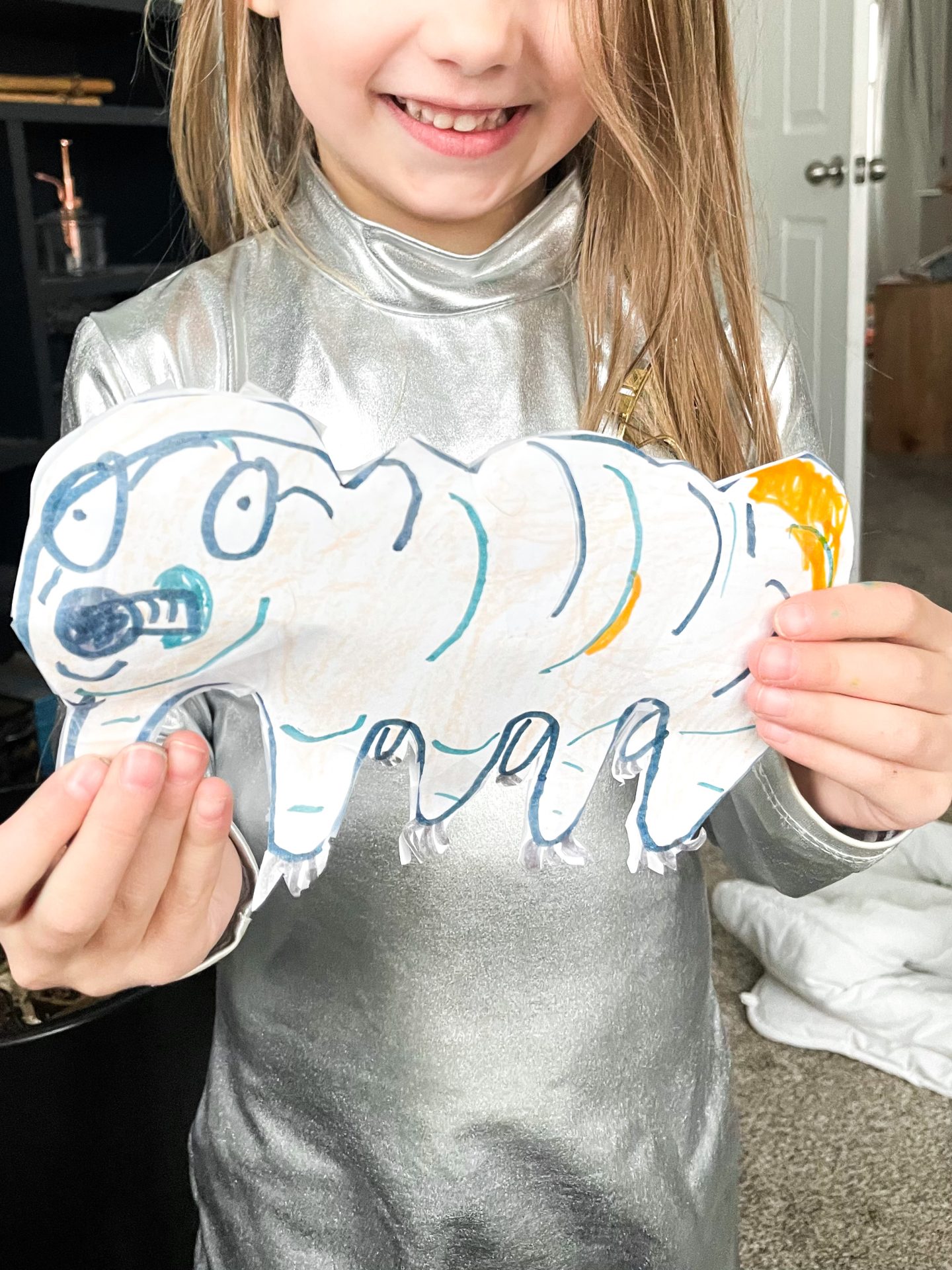
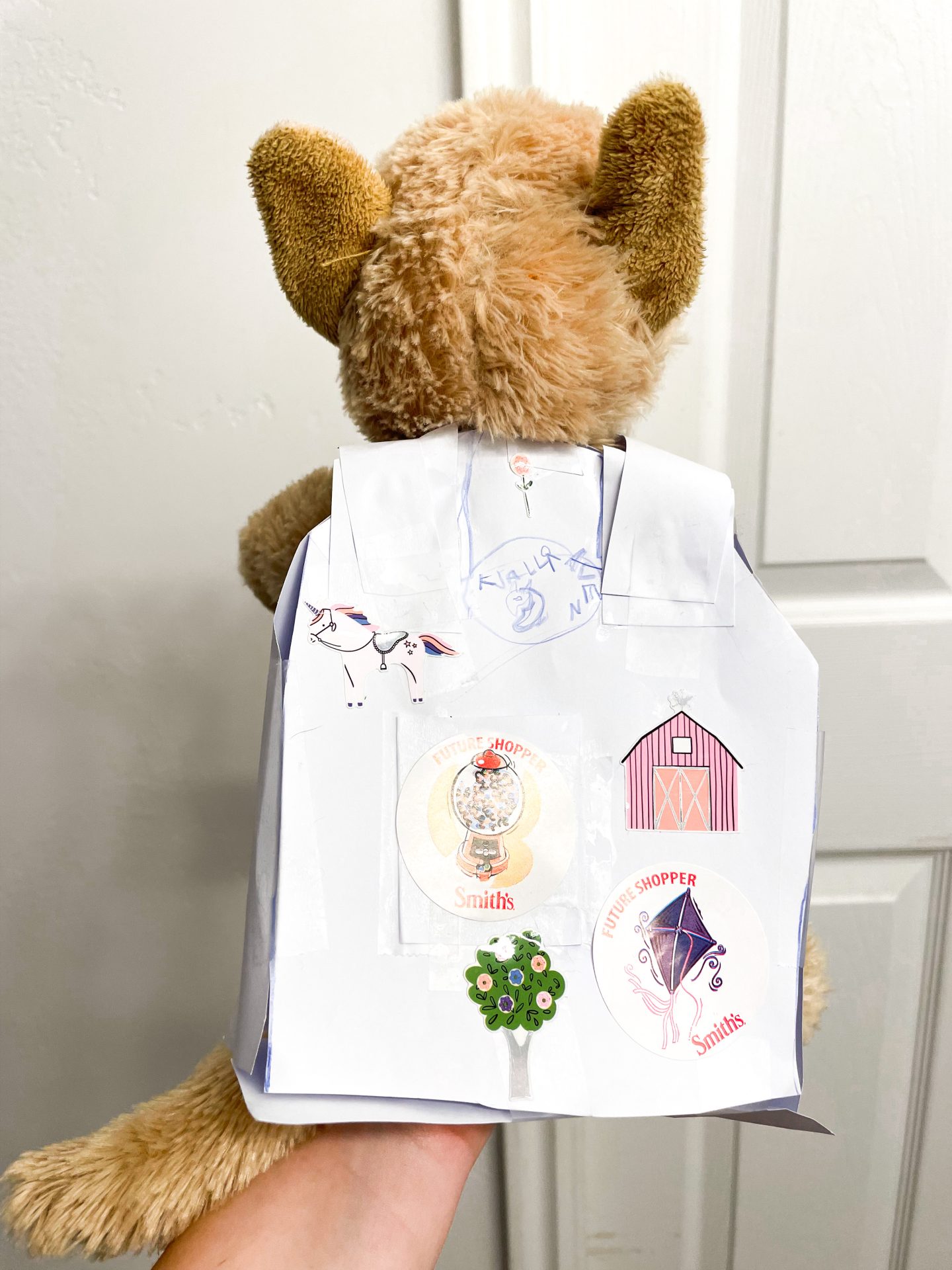
I hope this helps you figure out how to tackle your kids’ things, and keep your spaces better under control. It’s not a flawless system. We recently had to KonMari kids things. However, the mindfulness, and goal of keeping each type of item in limited physical spaces, I think, is key to avoiding a total takeover from kids’ stuff.
Good luck!
